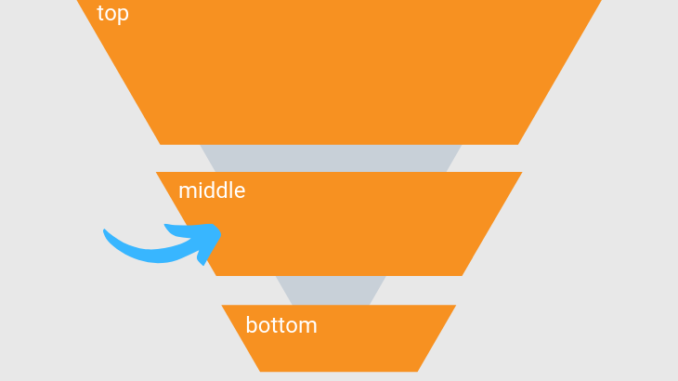
Middle of funnel digital marketing strategies should focus on two main actions: engaging and educating.
The middle of your funnel is where you can qualify your buyers and either say goodbye to those that don’t fit into your persona or “Hello!” to qualified buyers. Even though these buyers are aware of your brand, you still need to impress.
Your middle of funnel tactics will vary widely depending on your industry, but the core strategies are the same. Here are some of the most common strategies that are used for this crucial consideration phase.
Why Focus on Consideration?
Even before you establish qualified and unqualified buyers, you need to properly present your business case and differentiators. Otherwise, you won’t know the full extent of leads to pursue. This stage also helps you decide what core messaging to continue (or discontinue) down the road.
Let’s go through three common middle of funnel digital strategies and how to customize them for your industry.
Core Page Content
The first and most essential middle of funnel strategy is the rich content that lives on your core website pages. This informational content should have a documented strategy so you know how to execute when new products/service pages are created.
Your core page strategy should include:
Example: You’re in business manufacturing high-tech pillows. Your product is the absolute best in the industry, and you were featured on Good Morning America. Now what?
Encourage engagement and education by designing your product page with rich content.
You got the buzz. In fact, users are flocking to your site. But if all they see is the hefty price tag, they will hit “back” in an instant. So you need to plan your product page carefully. We think it’s always best to start with the loose format of–
If we follow this format, our core product might look something like this:
[Why] :: Wake up feeling cheerful, energized, and vivacious.
[How] :: Our Pillow uses hybrid cooling foam, ergonomic shape, and aromatherapy to deliver your best night’s sleep.
[What] :: Here’s Our Pillow. For $49.99
At the end of this content, provide some additional resources: An article on the importance of sleep, an infographic about REM cycles, or a recipe for sleepytime tea.
Additional/Supportive Content
The second type of content goes hand in hand with your core content and should complement it. This additional/supportive content may be closer to the top of the funnel –or– closer to the bottom. It depends on the type.
Example: Let’s continue with our pillow company. We already know that users have heard of us and may have even looked at our product page. But how do we get them to truly consider making a purchase or bring them back one they’ve disengaged?
Developing consistent, engaging content.
Users rarely purchase a product or fill in a lead form on their first (or second or third) interaction with a brand. It takes consistent, trustworthy messaging to gain their trust and convince them that you might be worth their time.
What kind of content could this be? It will vary depending on your industry and brand, but here are just some of the potential content offerings you could create.
Articles (how tos, lists, stories, question-answer posts)
The middle of the funnel is all about content and how it complements itself and feeds users further into the funnel. While this content may live on different platforms (email vs social vs on-site) it has one job: to educate and engage qualified users and get them to seriously consider doing business with you.
KPIs to Track
To measure the success of your MuFu strategy, look at the following KPIs:
For help creating a custom middle of funnel strategy, contact the digital team at Zenman.
